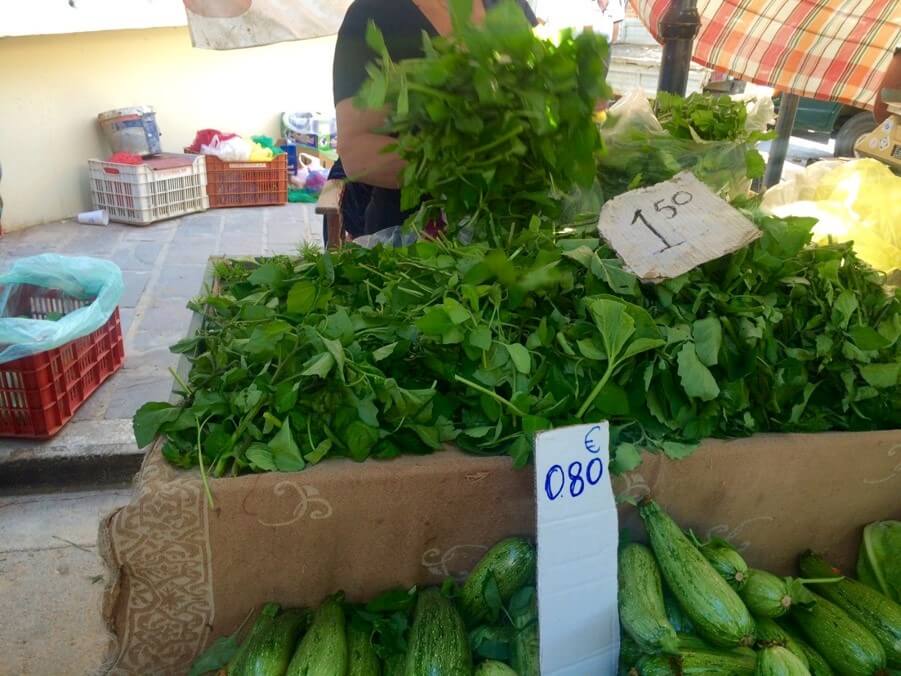Bringing the Mediterranean Diet to Life

So much has been written about the health benefits of the Mediterranean Diet, one of the most widely studied diet patterns on the planet. Protection against cardiovascular disease, type 2 diabetes, certain types of cancer, and neurodegenerative diseases are some of the major, science-based health bonuses linked with this eating style. In fact, for the first time the brand new Dietary Guidelines for Americans recommends the Mediterranean diet as a healthy eating pattern worth adopting in order to improve overall health.
What’s so special about the Mediterranean diet? To really understand the Mediterranean diet, you must first come to know the region from which it originated. The Mediterranean diet refers to the traditional way of eating in the countries surrounding the Mediterranean Sea. While the specific foods and traditions of this region may vary from country to country, many basic features emerge across the region, including a reliance on minimally processed vegetables, fruits, seafood, grains, nuts, olives, and wine at the core of the diet.
It’s important to note that the Mediterranean diet is not a “diet” per se. People in the Mediterranean, who never thought of their eating style as a “diet”, have been eating this way for centuries. The eating pattern evolved over the centuries, as a result of religion, war, immigration, and food availability. Culture shifted, thanks to the influx of new people and foods from other countries, religions re-enforced dietary practices, and the sheer availability of foods, from seafood to olives, contributed to what we now see as the traditional Mediterranean diet.
When the legendary health researcher Ancel Keyes first began studying the Mediterranean diet some 60 years ago, he observed that in the poor regions of the Mediterranean people suffered a much lower risk of cardiovascular disease compared to the wealthier nations who ate a Western diet—more red meat, animal fats, and refined grains, and fewer nuts, olives, seafood, whole grains, vegetables and fruits. Indeed, the “poor man’s diet” of the Mediterranean turned out to be ideal.
The diet was born out of survival. Cattle weren’t suited for the dry, rocky terrain, but fish were abundant—and virtually free—in the sea. The sunny, warm climate meant a wide array of wild foods, such as herbs and greens, could be foraged, and a multitude of plants could be cultivated, including countless vegetables, such as potatoes, tomatoes, eggplant, and peppers; whole grains, like as wheat; legumes, such as beans, peas and lentils; fruits, including citrus, grapes, and figs; and fat-rich plants, like avocados, nuts, seeds and olives. Fermented dairy products, such as yogurt and cheese, helped preserve goat’s milk; grapes were harvested and turned into wine; and olives were pressed into the golden nectar that is olive oil—an important constant in the Mediterranean diet.
The foods of the Mediterranean, from couscous served with a flavorful vegetable stew to whole fish simmered with olives and tomatoes, are simple and rustic—yet amazingly delicious. The foods are seasonal and local—one of the key features of the Mediterranean diet—because the eating style was based on ingredients available in the region, rather than imported, costly foods from far away. The freshness and quality of foods; addition of healthy fats, such as olives and olive oil, avocados, and nuts; generous contribution of herbs and spices, such as rosemary, garlic, and oregano; and accompaniment of a local wine at mealtimes create some of the most enjoyable cuisine in the world. At the core of the diet is a reliance on real, whole foods, rather than highly processed, boxed, and quick serve food products.
And it’s not just the food that makes up the essence of the Mediterranean diet. Culture plays a part, too. Meals are savored and enjoyed with others, over hours. Physical activity is a part of every day life, from foraging and cultivating foods and fishing in the ocean to and enjoying a walk at the end of the day.
The secret of bringing the Mediterranean diet home to America is to focus on the main principles of the diet: Eat a whole foods diet with a focus on seafood and local, sustainable plant foods. This is something each of us can do.
Here are my best tips for making the most of the Mediterranean diet in your own hometown.
• Include seafood on the menu at least twice a week. Choose local, sustainable seafood, and prepare it simply—grilled, baked, poached—with flavorful ingredients.
• Fill your plate with local, seasonal vegetables. Check out your local farmers market to see what produce is available in your region.
• Make fruit your dessert. A simple seasonal offering of a fig, bowl of berries, or crisp apple is the best reward.
• Make your grains whole. Simple rustic breads, simmered farro, oat porridge, and bulgur are examples of doing grains right.
• Include dairy foods in moderation. Cheeses, yogurt, and milk can be enjoyed as part of a balanced diet.
• Eat more plant-based meals. Create more delicious meals focusing on lentils, beans, and dried peas.
• Add healthy fats. Instead of shunning fat, enjoy moderate amounts of extra virgin olive oil, almonds, walnuts, pistachios, sesame seeds, and avocado in your daily diet for flavor and health.
• Drink wine, in moderation. If you drink, feel good about partaking in a glass of wine, in moderation (1 glass for women, 2 for men) with meals.
• Enjoy meals in the company of others. Savor your food and eat mindfully in the presence of friends and family.
• Get active. Engage in physical activity for at least 30 minutes per day.


